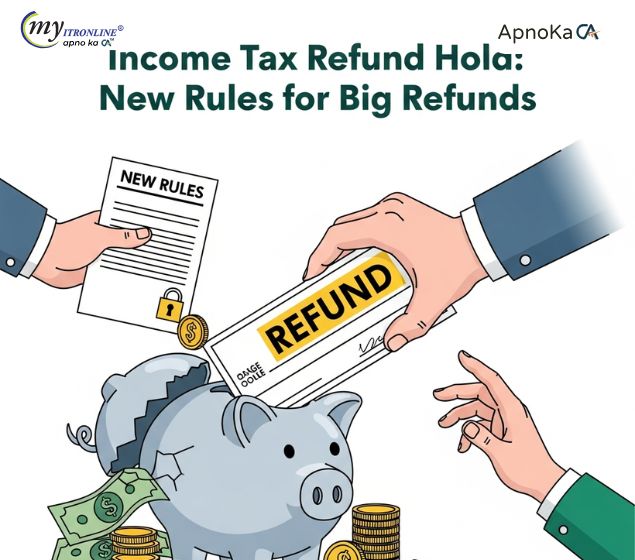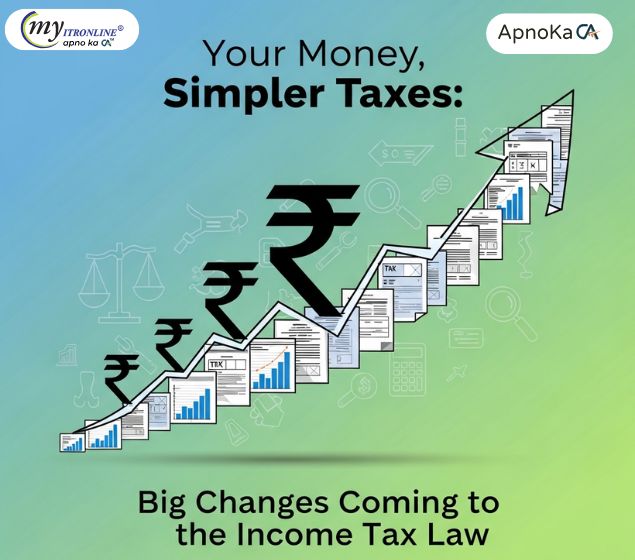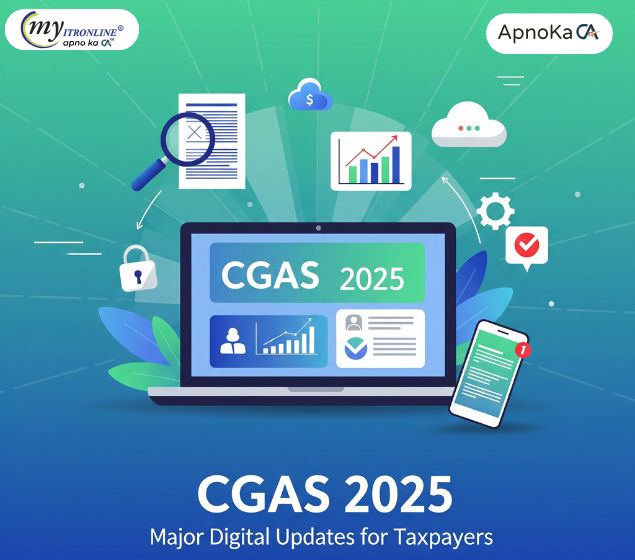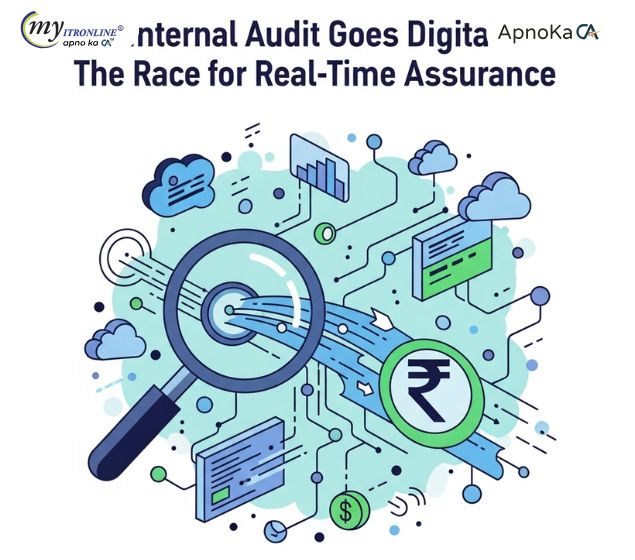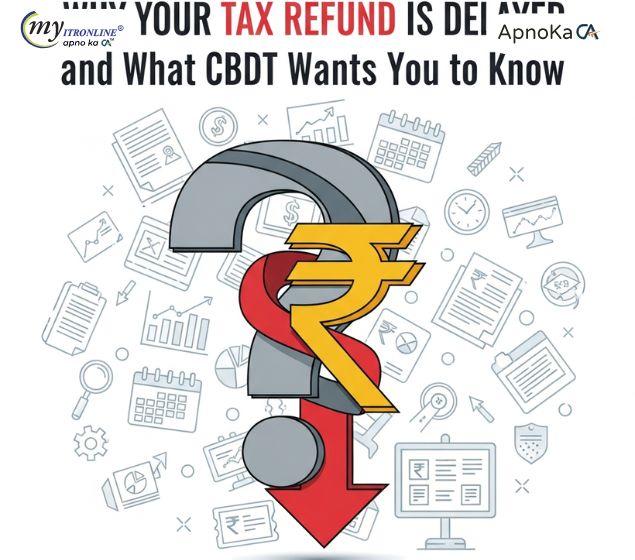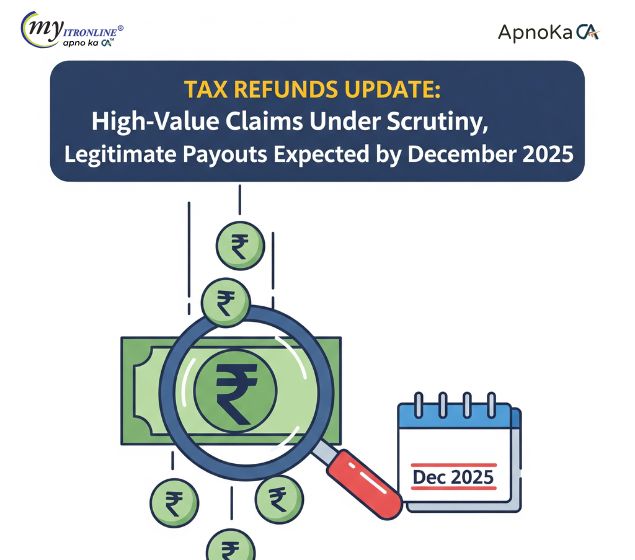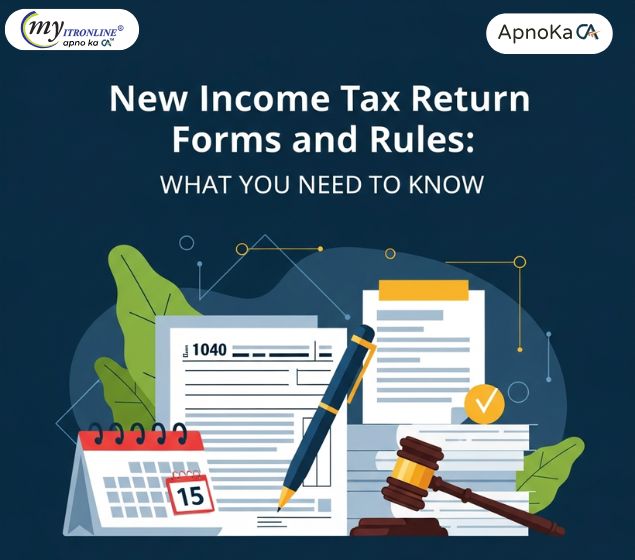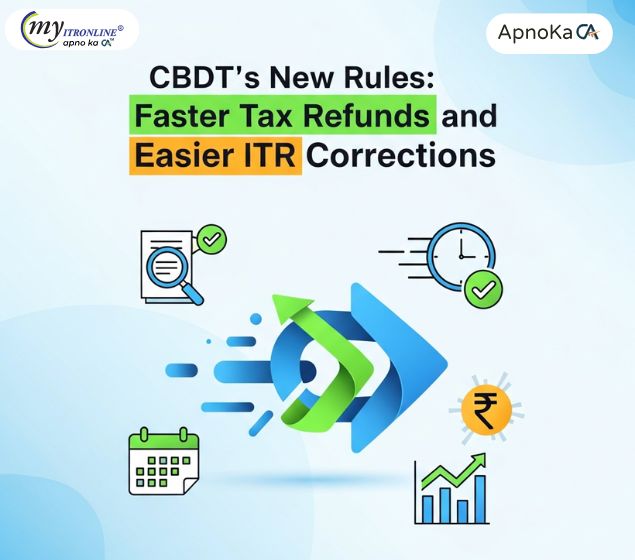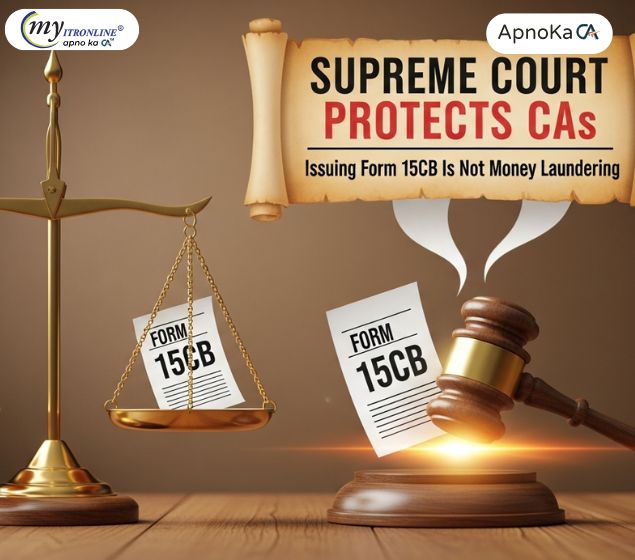India Tax Update: What's New with Surcharge & Marginal Relief (AY 25-26 & Budget 2
This blog explains the concept of income tax surcharge and marginal relief in India for AY 2025-26 (FY 2024-25). It details the current surcharge rates under both old and new tax regimes and illustrates how marginal relief prevents excessive tax liability near surcharge thresholds. Additionally, it covers key Budget 2025 proposals affecting FY 2025-26 (AY 2026-27), including revised tax slabs, increased rebate under Sec 87A, and a new type of marginal relief linked to the rebate threshold.
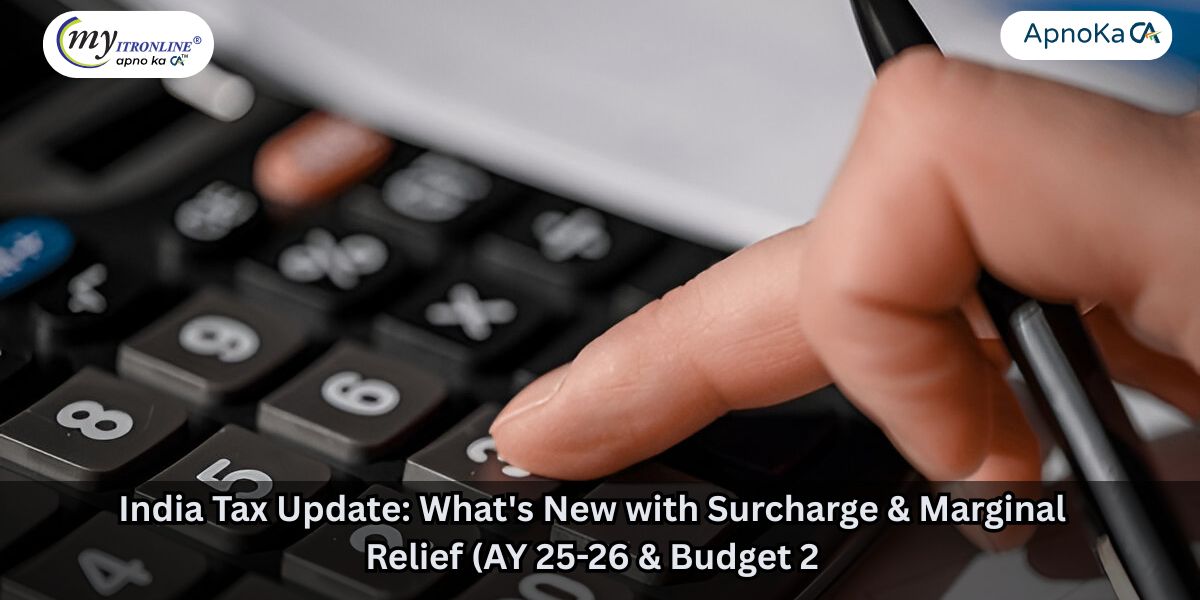
Understanding the intricacies of income tax can be quite difficult, particularly with terms such as 'Surcharge' and 'Marginal Relief'. These elements have a significant effect on high-income individuals in India. Grasping how they function is vital for precise tax calculations and planning.
This article outlines:
- 1. An explanation of Surcharge and the applicable rates for AY 2025-26 (FY 2024-25).
- 2. How Marginal Relief on Surcharge mitigates undesirable tax increases for AY 2025-26.
- 3. Major proposals from Budget 2025 that will affect FY 2025-26 (AY 2026-27), including a new category of Marginal Relief associated with tax rebates.
Let’s explore further!
Surcharge can be defined as an extra tax imposed on the income tax owed, rather than on the income itself. It applies to taxpayers whose earnings exceed specific defined limits. You can think of it as an additional charge on the tax, aimed at ensuring that those with higher incomes contribute more significantly to the country's finances.
The rates depend on your total income and the tax regime you choose:
| Net Taxable Income Slab | Surcharge Rate (Old Regime) | Surcharge Rate (New Regime - Default) |
|---|---|---|
| Up to ₹ 50 Lakh | Nil | Nil |
| Above ₹ 50 Lakh up to ₹ 1 Crore | 10% | 10% |
| Above ₹ 1 Crore up to ₹ 2 Crore | 15% | 15% |
| Above ₹ 2 Crore up to ₹ 5 Crore | 25% | 25% |
| Above ₹ 5 Crore | 37% | 25% |
Key Points:
- The New Tax Regime has set a maximum surcharge rate of 25%, effective from AY 2024-25, applicable even for incomes over ₹ 5 Crore.
- Surcharge on tax due for dividend income and capital gains as per sections 111A, 112, and 112A is limited to 15% (unless specific provisions like 115A, 115AB, etc., are applicable).
- A Health & Education Cess of 4% is imposed on the total tax liability (Income Tax + Surcharge).
- For Firms (including LLPs) & Local Authorities: A surcharge of 12% applies if total income exceeds ₹ 1 Crore.
- Domestic Companies:
- 7% if income is greater than ₹ 1 Crore but less than or equal to ₹ 10 Crore.
- 12% if income exceeds ₹ 10 Crore.
- Flat rate of 10% if choosing concessional tax rates under Sec 115BAA or 115BAB.
- Foreign Companies:
- 2% if income is greater than ₹ 1 Crore but less than or equal to ₹ 10 Crore.
- 5% if income exceeds ₹ 10 Crore.
Consider a scenario where your income is just over a surcharge limit (for example, ₹ 50.1 Lakhs). Without a relief mechanism, the application of surcharge could result in a tax increase that far exceeds the ₹ 10,000 of income you earned above the ₹ 50 Lakh limit. This situation appears inequitable, correct?
That’s where Marginal Relief comes into play.
Objective:
To ensure that the extra tax due (including surcharge) resulting from surpassing a surcharge threshold (₹50L, ₹1Cr, ₹2Cr, ₹5Cr) does not surpass the income earned above that limit.
Mechanism:
The process guarantees that your total tax liability (inclusive of surcharge) is restricted. It must not exceed:
[Tax on the threshold figure (e.g., ₹50L)] + [The income that surpasses the threshold (e.g., ₹10,000)]
Calculation Steps:
- Determine Tax (A): Assess the income tax owed on your total income, factoring in the relevant surcharge.
- Determine Tax (B): Assess the income tax owed at the threshold just under your income level (for example, ₹ 50 Lakhs, ₹ 1 Crore, etc.). No surcharge is applicable at the exact threshold if it is the initial one.
- Determine Income Exceeding Threshold (C): Calculate the difference between your total income and the threshold income. (For example, ₹ 50,10,000 - ₹ 50,00,000 = ₹ 10,000).
- Determine Increase in Tax (D): Calculate the difference between Tax (A) and Tax (B). This represents the additional tax you are liable to pay due to exceeding the threshold.
- Assess Relief: If the Increase in Tax (D) is more than the Income Exceeding Threshold (C), you qualify for Marginal Relief.
- Marginal Relief Amount = D - C
- Net Tax Payable = Tax (A) - Marginal Relief Amount
- Alternatively, the Net Tax Payable (excluding cess) will be Tax (B) + C.
Example (AY 2025-26, Old Regime):
Assume a person (under 60) has a total income of ₹ 51,00,000.
- Tax (A) on ₹ 51,00,000 (Old Regime):
- Tax on ₹ 51,00,000 = ₹ 1,12,500 + 30% of (51,00,000 - 10,00,000) = ₹ 1,12,500 + ₹ 12,30,000 = ₹ 13,42,500
- Surcharge at 10% (given that income > ₹50L) = 10% of ₹ 13,42,500 = ₹ 1,34,250
- Total Tax (A) = ₹ 13,42,500 + ₹ 1,34,250 = ₹ 14,76,750
- Tax (B) on ₹ 50,00,000 (Old Regime):
- Tax on ₹ 50,00,000 = ₹ 1,12,500 + 30% of (50,00,000 - 10,00,000) = ₹ 1,12,500 + ₹ 12,00,000 = ₹ 13,12,500 (No surcharge is applicable at exactly ₹50L).
- Income Exceeding Threshold (C): ₹ 51,00,000 - ₹ 50,00,000 = ₹ 1,00,000
- Increase in Tax (D): ₹ 14,76,750 - ₹ 13,12,500 = ₹ 1,64,250
- Evaluate for Relief: Is D greater than C? Yes, ₹ 1,64,250 > ₹ 1,00,000.
- Marginal Relief = ₹ 1,64,250 - ₹ 1,00,000 = ₹ 64,250
- Net Tax Payable (before cess): ₹ 14,76,750 - ₹ 64,250 = ₹ 14,12,500
- (Verification: Tax (B) + C = ₹ 13,12,500 + ₹ 1,00,000 = ₹ 14,12,500)
Finally, add a 4% Health & Education Cess to ₹ 14,12,500.
Looking Ahead: Budget 2025 Proposals (Effective FY 2025-26 / AY 2026-27)
The Budget 2025 introduced notable proposed modifications, primarily affecting the New Tax Regime, which will take effect from April 1, 2025 (FY 2025-26).
Key Proposed Modifications:
- Updated New Tax Regime Slabs:
- ₹ 0 - ₹ 4 Lakh: Nil
- ₹ 4 Lakh - ₹ 8 Lakh: 5%
- ₹ 8 Lakh - ₹ 12 Lakh: 10%
- ₹ 12 Lakh - ₹ 16 Lakh: 15%
- ₹ 16 Lakh - ₹ 20 Lakh: 20%
- ₹ 20 Lakh - ₹ 24 Lakh: 25%
- Above ₹ 24 Lakh: 30%
- Heightened Rebate u/s 87A: The limit for tax rebates has been raised significantly under the new regime. Individuals with taxable income up to ₹ 12 Lakhs will effectively incur zero tax due to a proposed rebate of up to ₹ 60,000.
- Enhanced Standard Deduction: For salaried individuals and pensioners under the new regime, the standard deduction is slated to increase to ₹ 75,000.
- A novel form of marginal relief is suggested, which is tied to the new ₹ 12 Lakh rebate threshold.
- Objective: To offer assistance to taxpayers whose income slightly surpasses the new zero-tax threshold of ₹ 12 Lakhs in the proposed new regime.
- Functioning: This ensures that the tax owed on income just exceeding ₹ 12 Lakhs does not go beyond the amount of income that exceeds ₹ 12 Lakhs.
- Eligibility: This relief is intended for resident individuals with taxable income ranging from ₹ 12,00,001 to ₹ 12,75,000 (according to the proposed new regime).
- Calculation Method: If your taxable income falls within this range, your tax liability (before cess) will be limited to:
Your Total Taxable Income - ₹ 12,00,000.
Assume a resident individual has a taxable income of ₹ 12,10,000 under the new proposed regime.
- Tax Calculation (without relief):
- For the first ₹ 4L: Nil
- For the next ₹ 4L (@5%): ₹ 20,000
- For the next ₹ 4L (@10%): ₹ 40,000
- For the remaining ₹ 10,000 (@15%): ₹ 1,500
- Total Tax = ₹ 61,500
- Evaluate Marginal Relief (Rebate): Income is within ₹ 12L to ₹ 12.75L.
- Implement Relief:
- Income exceeding ₹ 12L = ₹ 12,10,000 - ₹ 12,00,000 = ₹ 10,000
- The tax owed cannot exceed this figure.
- Final Tax Payable (before cess) = ₹ 10,000 (instead of ₹ 61,500).
- If income was ₹ 12,50,000: The standard tax calculation would yield ₹ 67,500. The income exceeding ₹ 12L is ₹ 50,000. Hence, final tax payable (before cess) = ₹ 50,000.
- If income was ₹ 12,70,000: The regular tax calculated would be ₹ 70,500. The income over ₹ 12L is ₹ 70,000. Final tax payable (before cess) = ₹ 70,000.
- If income reached ₹ 12,75,000: The normal tax would be ₹ 71,250. The amount exceeding ₹ 12L is ₹ 75,000. Since the calculated tax (₹ 71,250) is lower than the excess income (₹ 75,000), no marginal relief will be given. Final tax payable (before cess) = ₹ 71,250.
Will remain the same as in AY 2025-26 (maximum 25%). Marginal relief on surcharge (as described for AY 2025-26) will still apply to incomes exceeding ₹50L, ₹1Cr, and ₹2Cr thresholds.
Bear in mind, the New Tax Regime is the default setting. If you wish to adopt the Old Tax Regime (to take advantage of various deductions such as HRA, Chapter VI-A deductions like 80C, 80D etc., which are largely disallowed under the new regime), you need to opt out of the new regime. For taxpayers with business income, the option to switch between regimes is restricted. Carefully evaluate based on your income, possible deductions, and the tax liability under both regimes.
The surcharge escalates the tax responsibility for high-income earners, while Marginal Relief serves as a vital safeguard, preventing disproportionate tax increases when income slightly exceeds designated thresholds (₹50L, ₹1Cr, etc., for surcharge).
The Budget 2025 proposals for FY 2025-26 bring significant changes, particularly for the New Tax Regime, with updated slabs, a considerably higher zero-tax threshold (₹ 12 Lakhs due to rebate), and a specific marginal relief mechanism associated with this new threshold.
Keeping abreast of these details is essential for effective tax planning. Given the complexities, especially with the suggested changes, it is always wise to consult a tax professional to ensure compliance and optimize your tax obligations.
FILING YOUR INCOME TAX RETURN F.Y 2024-25 (A.Y. 2025-2026) WITH MYITRONLINE
The income tax filing deadline is right around the corner. If you haven’t filed yet, do it today with Myitronline! Avoid last minute rush and file your tax return today on MYITRONLINE in Just 5 mins.(www.myitronline.com)
If you are looking for eCA assistance to file your income tax return/ GST, you can opt for MYITRONLINE eCA assisted plan starting
Upload Salary Individual Form-16
If you have any questions with filing your tax return, please reply to this mail. info@myitronline.com OR call 9971055886,8130309886.
Note-All the aforementioned information in the article is taken from authentic resources and has been published after moderation. Any change in the information other than fact must be believed as a human error. For queries mail us at marketing@myitronline.com
Krishna Gopal Varshney
An editor at apnokacaKrishna Gopal Varshney, Founder & CEO of Myitronline Global Services Private Limited at Delhi. A dedicated and tireless Expert Service Provider for the clients seeking tax filing assistance and all other essential requirements associated with Business/Professional establishment. Connect to us and let us give the Best Support to make you a Success. Visit our website for latest Business News and IT Updates.
Leave a reply
Your email address will not be published. Required fields are marked *Share this article
Krishna Gopal Varshney, Founder & CEO of Myitronline Global Services Private Limited at Delhi. A dedicated and tireless Expert Service Provider for the clients seeking tax filing assistance and all other essential requirements associated with Business/Professional establishment. Connect to us and let us give the Best Support to make you a Success. Visit our website for latest Business News and IT Updates.
View articles








